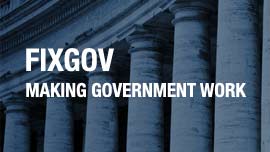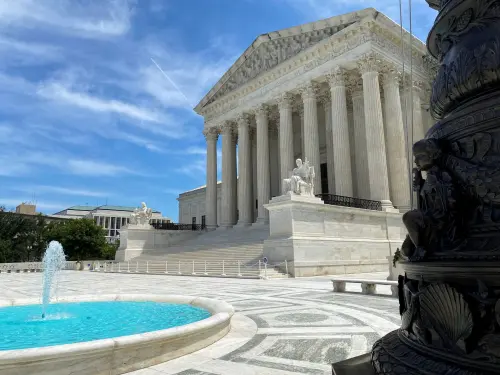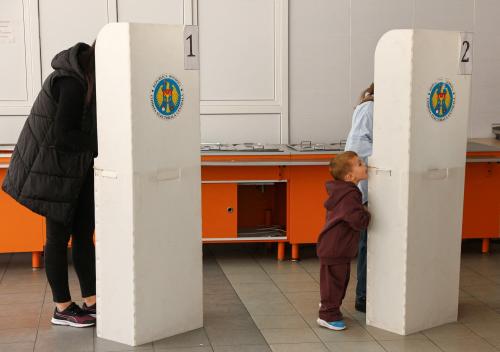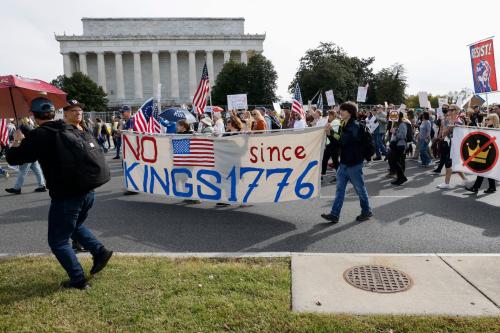President Trump has sent his long-promised “rescission” package to Capitol Hill, proposing $9.4 billion in cuts to international aid and public broadcasting programs. If the Republican-led Congress agrees in whole or in part, the Treasury Department would claw back those funds to government coffers.
Conservative lawmakers and activists have demanded for months that the president and Congress legally cancel billions in federal spending the administration has already withheld—a sum Democrats peg at over $400 billion. Absent action by Congress, conservatives worry that lawmakers will simply restore the impounded funds for this and the coming fiscal year.
Recent presidents have a limited track record in convincing Congress to rescind previously appropriated funding. True, Trump has targeted an exceedingly narrow slice of federal spending, primarily so-called “culture war” programs such as public radio and foreign aid. But slim GOP majorities and cross-cutting GOP cleavages could complicate passage, raising questions about cuts to which Congress might agree, if any. Still, even if Trump fails to secure Congress’ consent, his administration threatens to unconstitutionally impound billions in federal funds.
Here’s what you need to know about the path ahead.
Majority rule
There are several ways in which Congress could cancel funding that lawmakers have already appropriated for the current fiscal year. Only one route creates a filibuster-proof pathway to Senate passage: The rescission process detailed in the 1974 Congressional Budget and Impoundment Control Act (CBA).
Under the CBA, if a president wishes to cancel spending already provided by Congress in that year’s annual discretionary spending bills, the president must send a message to Capitol Hill proposing program funds to be rescinded. After messaging Congress, the president can withhold the targeted funds for 45 days of “continuous session” (which excludes days when either chamber is on break for more than three days). What if Congress and the president fail to enact a measure that formally rescinds the money by the end of that 45-day period (which Congress will likely hit later this summer or early fall)? Assuming the administration abides by federal budget law, the administration must legally release the funds.
The CBA’s provisions offer expedited House and Senate consideration of rescission measures. That is less important in the House because a cohesive majority already has the authority to move measures by a simple majority vote. Not so in the Senate, where debate on most legislative measures can be limited only by 60 votes or the unanimous consent of all 100 senators.
In contrast, the CBA limits debate on a rescission bill to 10 hours. When time expires (and senators exhaust themselves voting on amendments in the “vote-a-rama” that could follow), a simple majority of the Senate can advance the measure without needing to muster a bipartisan coalition of 60 votes. Conceptually, the filibuster ban makes the process politically attractive to the majority party when the president’s party holds both chambers.
A tool rarely deployed
According to the Congressional Research Service, presidents have technically only fully attempted the CBA rescission process twice—successfully by President H.W. Bush in 1992 and unsuccessfully by President Trump in 2018. Casting the net more broadly captures a wider array of pathways to rescind federal spending without following CBA dictates. According to the U.S. Government Accountability Office (GAO) in 2020, lawmakers had agreed to claw back roughly a quarter of the $92 billion in rescissions requested by presidents since 1974. With Congress now annually appropriating about $1.8 trillion in discretionary spending, rescissions represent a drop in the proverbial budget bucket.
Why so few rescissions, despite favorable CBA rules?
First, most federal programs have strong constituencies in and outside of Congress. Because senators can filibuster spending bills, lawmakers typically agree to most discretionary appropriations bills with bipartisan, supermajority votes. True, bipartisan support does not exist for every federal program buried in these bills. Instead, negotiations typically generate “win-win” deals: Each party (and its favored coalitions) log-roll across federal programs to secure bipartisan support for omnibus spending bills. In short, political dynamics that generate spending deals can make it hard for a simple majority to unwind them.
Second, legislators typically care more about the positions they take than the policies that result. On more salient appropriations, lawmakers might be reluctant to change their votes to rescind funding, lest challengers later accuse them of flip-flopping. Recall the pickle in which Sen. John Kerry (D-Mass.) found himself while running for the Democratic presidential nomination in 2004. As Senator Kerry explained his votes on funding the war in Iraq, “I actually voted in favor of the $87 billion before I voted against it.” Or, more politically colloquial today, “I was for it before I was against it.” Fear of being tagged as a flip-flopper could dampen enthusiasm for rescissions.
What comes next?
President Trump’s requests total just a small fraction of congressional appropriations and a very narrow slice of the billions frozen by the administration. Moreover, plaintiffs suing the government are already gaining traction in federal courts as they try to unfreeze program funds targeted by the Office of Management and Budget (OMB) and the Department of Government Efficiency (DOGE).
Why propose this package now?
First, codifying frozen funds might provide a veneer of political legitimacy to OMB and DOGE efforts to slash federal spending. Indeed, some GOP legislators earlier this year encouraged the administration to formally request rescissions for this reason. Legally zeroing out funding might also make it harder for Congress to renew programs when, later this summer, Congress starts to draft next year’s spending bills. As Senate budget chair Sen. Lindsay Graham (R-SC) put it, “It’s the one way to make DOGE cuts real.”
Second, the narrow reach of President Trump’s ambit suggests that trying to codify a broader set of cuts might be considered too politically risky. Instead, the administration coupled foreign aid programs unpopular with MAGA voters with perennial culture war targets such as National Public Radio (NPR) and Public Broadcasting Service (PBS), funded in part through the Corporation for Public Broadcasting. This slim package offers the White House a chance to test whether Congress would approve broader, larger cuts.
Third, OMB and DOGE have, thus far, acted unilaterally when they have frozen funding already appropriated in law by Congress. That means lawmakers have generally avoided blame for potentially unpopular cuts, including freezing funds for the upkeep of national parks, veterans’ health care, and Social Security offices. Although House and Senate conservatives might relish voting to slash these programs, lawmakers from more competitive districts and states might be more reluctant, especially as midterm elections approach. Earlier this spring, for example, during Senate consideration of a major spending bill, only half of GOP senators voted to slash funding for USAID. True, lawmakers under the CBA can make some adjustments to rescission bills in ways that might make the bill more palatable to any holdouts. But, intra-party cleavages over this narrow rescission request might prove a bridge too far for some Republicans (who can lose just a small handful of GOP votes in either chamber).
That said, pressure on Republican lawmakers (especially from President Trump) to toe the line will surely grow. Wavering lawmakers in both chambers might simply decide to take a bite at this small apple in hopes that President Trump will not ask them to eat even bigger and potentially more politically risky cuts down the line.
Either way, legislators face the possibility that the administration might just illegally impound all the spending it opposes, skirting Congress altogether. President Trump and his director of OMB, after all, make no secret that they view Congress’ “power of the purse” unconstitutional, despite its centrality to Congress’ authority in Article 1 of the U.S. Constitution.
However the Republican Congress responds to President Trump’s proposed rescissions, don’t lose sight of the bigger and broader constitutional fight—and potential crisis—that looms.
The Brookings Institution is committed to quality, independence, and impact.
We are supported by a diverse array of funders. In line with our values and policies, each Brookings publication represents the sole views of its author(s).








Commentary
Trump wants Congress to vote for his rescissions. Are Republicans willing to own the cuts?
June 5, 2025